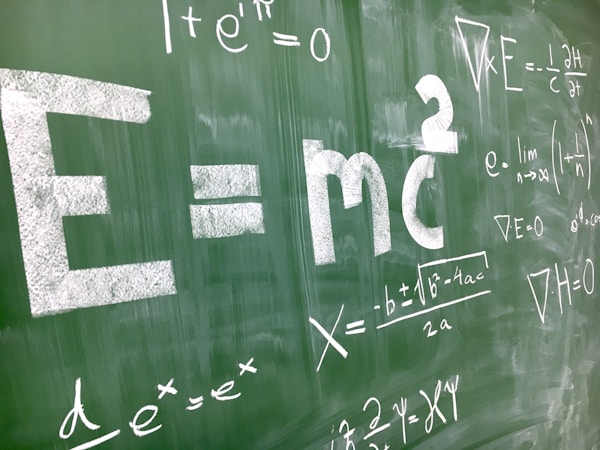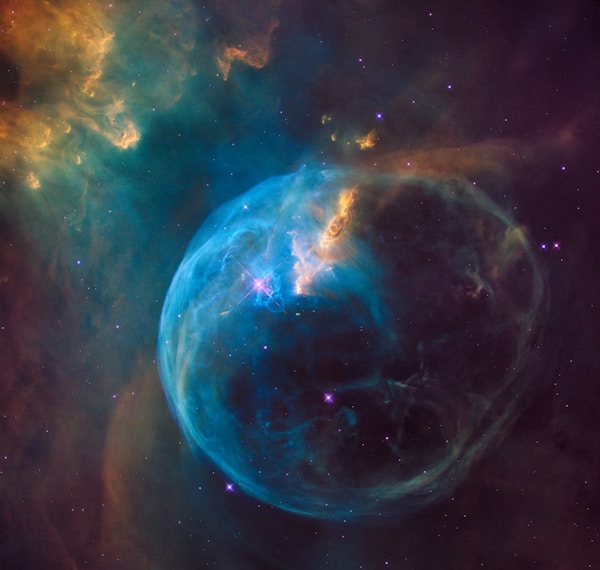The Quantum Revolution
Quantum mechanics represents one of the most profound intellectual achievements in human history, fundamentally reshaping our understanding of physical reality. At its core lies the principle of superposition—a concept so counterintuitive that even physicists who work with it daily find it challenging to reconcile with everyday experience. Combined with wave-particle duality, superposition defines the quantum world's essential strangeness and mathematical elegance.
Wave-Particle Duality: The Foundation
The journey into quantum superposition begins with wave-particle duality, first glimpsed in the early 20th century through groundbreaking experiments. Light, long understood as electromagnetic waves, demonstrated particle-like properties in the photoelectric effect, as Einstein showed in 1905. Conversely, electrons—definitively particles—exhibited wave-like interference patterns in the famous double-slit experiment.
This duality isn't a compromise or approximation. Quantum entities genuinely possess both wave and particle characteristics simultaneously, though which aspect manifests depends on the experimental context. The mathematical framework describes quantum objects not as classical particles or waves, but as state vectors in Hilbert space, evolving according to the Schrödinger equation.
The Superposition Principle
Superposition states that any quantum system can exist in a combination—a linear superposition—of multiple distinct states simultaneously. Mathematically, if a system can exist in state |ψ₁⟩ and state |ψ₂⟩, it can also exist in the state α|ψ₁⟩ + β|ψ₂⟩, where α and β are complex probability amplitudes satisfying |α|² + |β|² = 1.
This isn't merely saying we're uncertain about which state the system occupies—that would be classical probability. Rather, the system genuinely exists in both states at once until measurement forces it into one definite state. The famous Schrödinger's cat thought experiment dramatizes this: the cat exists in a superposition of alive and dead states until observation occurs.
The Double-Slit Experiment: Superposition in Action
The double-slit experiment provides the most direct demonstration of quantum superposition. When individual particles (electrons, photons, or even large molecules) pass through two slits, they create an interference pattern on a detection screen—evidence of wave-like behavior. Each particle somehow "goes through both slits simultaneously," existing in a superposition of two spatial paths.
The interference pattern emerges from the quantum mechanical addition of probability amplitudes, not classical probabilities. The amplitude for detecting a particle at position x on the screen equals the sum of amplitudes for path 1 and path 2: A(x) = A₁(x) + A₂(x). The detection probability is then |A(x)|², producing constructive and destructive interference.
Remarkably, this interference persists even when particles are sent one at a time, with hours between emissions. Each individual particle interferes with itself, demonstrating that superposition is a property of single quantum systems, not merely ensembles.
Complementarity and Measurement
Niels Bohr's complementarity principle states that wave and particle properties are complementary: experiments designed to reveal one aspect necessarily obscure the other. If we place detectors at the slits to determine which path the particle takes, we collapse the superposition, and the interference pattern vanishes. We gain "which-path" information but lose interference—we cannot simultaneously observe both wave and particle characteristics.
This isn't a limitation of measurement technology but a fundamental feature of quantum reality. The act of measurement itself changes the quantum state, collapsing superpositions into definite outcomes. This "measurement problem" remains one of quantum mechanics' deepest interpretational challenges.
Mathematical Formalism
The Schrödinger equation governs quantum evolution: iℏ ∂ψ/∂t = Ĥψ, where ψ is the wavefunction, Ĥ is the Hamiltonian operator, and ℏ is the reduced Planck constant. This linear differential equation ensures that superpositions of solutions are themselves solutions—the mathematical embodiment of the superposition principle.
The wavefunction ψ(x,t) contains all information about the quantum system. Its squared magnitude |ψ(x,t)|² gives the probability density for finding the particle at position x at time t. For a superposition state, the wavefunction exhibits interference terms that have no classical analog, directly manifesting quantum coherence.
Beyond Simple Systems
Superposition extends far beyond position states. Electrons in atoms exist in superpositions of different energy levels. Photons can be in superpositions of different polarization states. In quantum computing, qubits exploit superposition to exist in combinations of |0⟩ and |1⟩ states simultaneously, enabling quantum parallelism.
Even macroscopic systems can, in principle, exist in superposition states. Superconducting quantum interference devices (SQUIDs) achieve superpositions of macroscopically distinct current states. Such experiments probe the quantum-classical boundary, testing where and why quantum superpositions give way to classical definiteness.
Interpretational Challenges
Different interpretations of quantum mechanics offer varying perspectives on superposition's ontological status. The Copenhagen interpretation treats superposition as complete physical description but regards measurement outcomes as fundamentally indeterministic. The Many-Worlds interpretation takes superposition literally: all possible measurement outcomes occur in different branching universes.
De Broglie-Bohm pilot wave theory introduces hidden variables to restore determinism while maintaining quantum predictions. Objective collapse theories modify quantum mechanics to explain why superpositions spontaneously collapse for large systems. Each interpretation grapples with the profound question: What is the nature of reality when quantum systems exist in superposition?
Decoherence and the Classical Limit
Why don't we observe quantum superpositions in everyday life? Decoherence theory provides answers. When quantum systems interact with their environment—as macroscopic objects inevitably do—entanglement with environmental degrees of freedom rapidly destroys coherent superpositions, leaving classical mixtures.
Decoherence explains the emergence of classical behavior from quantum mechanics without invoking new physics. It doesn't solve the measurement problem—questions about which outcome actually occurs remain—but it explains why superpositions become practically unobservable for large, warm systems interacting with their surroundings.
Conclusion
Quantum superposition and wave-particle duality represent fundamental departures from classical physics. They're not merely mathematical formalism but empirically verified features of reality, tested in countless experiments from the atomic to the nanoscale. Understanding these principles requires abandoning classical intuitions about definite states and embracing the quantum world's probabilistic, interference-laden nature.
As quantum technologies advance—quantum computing, quantum cryptography, quantum sensors—superposition transitions from physics curiosity to technological resource. Yet the foundational questions persist: What does it mean for a system to exist in superposition? When and how do superpositions collapse? These questions ensure that quantum mechanics remains not just a practical tool but a profound philosophical challenge to our understanding of reality itself.

